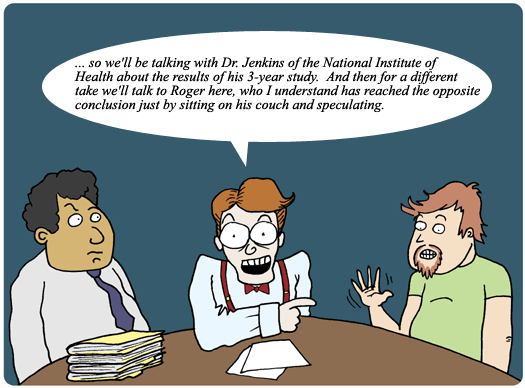
False balance in the media occurs when a journalist gives equal coverage, and therefore the perception of equal validity, to both sides of a story. While this sounds preferable to today’s hyper-politicized media, sometimes both sides of a story aren’t equally valid. For example, when the overwhelming consensus of the expert medical community says that vaccines do not cause autism but a famous former actress says they do, giving both sides equal coverage can be not only frustrating, but harmful to public health. The same is true of early reporting on whether cigarettes are bad for you. Giving equal coverage of the global community of expert climate scientists and spokespeople for the oil and gas industry who claim that climate science isn’t “settled” can also be problematic, as can coverage of other scientific topics.

Though it is discussed less frequently in this context, overfishing and marine conservation issues can also feature some fairly egregious examples of false balance. Coverage of a proposal to list great hammerhead sharks under the Endangered Species Act in yesterday’s South Florida Sun-Sentinel provides a useful case study.
